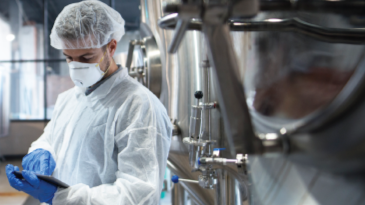The ISPE Biotech event in Boston, MA this week (June 28-30) was a great opportunity to take the pulse of the current and future outlook on biopharmaceutical manufacturing and therapeutics. The stimulating exchange was underpinned by both optimism for the future and frustration that we are not getting there fast enough.
The event kicked off with Tom Hartman, President and CEO of ISPE, making his way to the stage with Led Zeppelin’s “Rock n Roll” (i.e., “Been a long time since I rock and rolled…”) blasting from the conference room speakers. A diehard Zeppelin fan since my teens, I had a whole new appreciation for the ISPE organization (while recognizing they might have lost a few from the younger generation in the room along the way).
Tom set the stage with statistics illustrating how the biopharma sector continues to thrive, significantly growing year-over-year. Reasons cited included the specificity of targeted therapies, fewer off-target effects, the persistent rise in chronic disease as countries become more westernized and the growing proportion of the global “over 65” population – a segment that is projected to double in size by 2050. My thoughts went immediately to the dual challenge the industry faces, namely, to bring medicines to all who need them in a way which is also sustainable.
One of the overarching themes for the ISPE Biotech event was to “Level Up Agility in the New Normal.” The range of therapeutic modalities in the collective pipeline, coupled with the dynamics we’ve all experienced since the start of the pandemic, has presented numerous possibilities for modernizing biopharma manufacturing, and the first keynote from Dr. Peter Marks, Director of the FDA’s Center for Biologics Evaluation and Research (CBER), provided two case studies for Advanced Manufacturing. The first focused on the use of continuous manufacturing and the benefits of a smaller footprint, allowing for more distributed manufacturing, closer to the locality where it is needed, which in turn, can help alleviate supply chain challenges. Continuous manufacturing continued to be a theme throughout the conference and other benefits presented included less upfront capex requirement and less energy used.
The other case study focused on the progress to date and future applications of gene therapy. To grasp the full impact of rare disease affliction, Dr. Marks stressed, 1) the importance of looking at it as an aggregate and 2) that by understanding any single rare disease, we can both apply these insights to other rare diseases and address more common diseases using some of these same platforms.
In fact, the drive towards developing more universal platforms was a common thread among many presentations. Dr. Marks spoke nostalgically of the Maniatis Molecular Cloning manuals that the molecular biology nerds among us relied on in graduate school and how we need a “bespoke gene therapy cookbook” to standardize these methods so we can harness the commonalities into platforms and progress regulatory understanding of newer modalities rather than retrofitting regulations to the broad class of biologics.
While digitalization is so close we can almost touch it, despite its inevitability, several in the audience acknowledged that many of their operations are still on paper. On all things Advanced Manufacturing, Dr. Marks encouraged the audience to plug into the support that the FDA is offering, including the CBER/Advanced technology Team (CATT) and INTERACT (INitial Targeted Engagement for Regulatory Advice on CBER ProducTs). Other initiatives at the FDA include the Emerging Technologies Program, the Advanced Manufacturing Initiative and the Office of Digital Transformation.
One speaker described all the well-known reasons as to why it is unsustainable to persist with paper records including protracted review and approval times, weeks/months for sign-off and leaving shippable product trapped as work-in-progress inventory. Paper records also make root-cause analysis inefficient, sabotaging insights that could have been discovered from the data in electronic form.
The digitalization journey can launch from multiple points within the drug development and commercialization lifecycle. AspenTech was honored to be part of the discussion with our own Robert Zuban, Sr. Solution Consultant, delivering a well-received presentation on the use of simulation and digital twins in the modeling of chromatography conditions — an area where trial and error is expensive and time-consuming. As Dr. Christoph Herwig from Vienna University of Technology reinforced, using in silico tools can significantly reduce the number of wet experiments needed during process development and optimization — saving volumes of time, energy, money and materials. Other use cases for digital twin deployment include optimizing the feed rate for cell culture, accelerating scale-up and maximizing quality and yield. Being able to predict process events paves the way for employing real-time release testing (RTRT) and advanced automation with continuous manufacturing and/or closed-loop/advanced process control (APC).
As stated in one session, measurement is the first step to improvement. If the data,the measurements, exist only on paper, the trajectory of continuous improvement will be slow and operational excellence elusive. Taking control and staying ahead demands that the industry moves forward with digitalization.
Learn more about the trends we’re seeing in the pharma industry in the on-demand webinar: The Needle is Moving: Digital Transformation in Pharma Manufacturing.




Leave A Comment